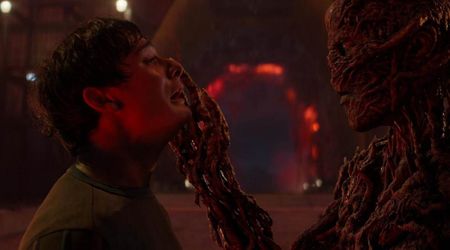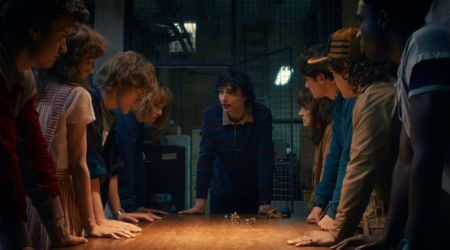‘JU-ON: Origins’ Review: Netflix’s J-horror series shuns classic Kayako story but leaves the viewer spooked

Spoilers for ‘JU-ON: Origins’
First and foremost, it is important to understand one thing: ‘JU-ON: Origins’ is not for everyone. The six-part Japanese horror series is surreal, confusing, violent, and unsettling. But it is all of these things that make it worth it, especially if you are a fan of Takashi Shimizu’s ‘Ju-On’ and ‘The Grudge’ films, and J-horror in general.
Netflix promised that ‘JU-ON: Origins’ would focus on the “true events” which is the inspiring base of the story. Those are the beginnings of the “curse” and will give a raw look at the chain of terror that befalls all of those who come into contact with the house.
“True events” or not, the series takes a whole new route, something totally different from the lore surrounding Kayako and the Saeki family in ‘Ju-On’ and ‘The Grudge’ films. What remains consistent, however, is the fixation with the cursed house in Tokyo, and the film series’ love for non-linear storytelling.
But how can a ‘Ju-On’ story work without its central character, the specter of Kayako Saeki? Without her deformed shape and terrifying death-rattle? Without her son Toshio’s ghost? Without the hideous and heartbreaking story of domestic abuse and murder that leads to the formation of the curse?
The short answer is, it does more than work.
‘JU-ON: Origins’ presents a complex tale that begins in the early ‘50s, and goes all the way up to 1997. And in more ways than one, it is an equally horrifying and heartbreaking tale that spans across many who have been in contact with the house. But most importantly, it doesn’t portray the curse as a pandemic that spreads willy-nilly. Rather, it presents it as a loop of events that keep taking place free of the conventional constraints of time. The easiest comparison one can make is with the Netflix series, ‘The Haunting of Hill House’, a loose adaptation of Shirley Jackson’s classic horror novel.
Those who have watched ‘The Haunting of Hill House’ will remember the brilliant use of this supernatural paradigm in the arc with Nellie and the “Bent-neck lady”.
In ‘JU-ON: Origins’, events take place within the confines of the house that make sense once you’ve seen the whole thing. For example, when Kiyomi (Ririka) first sees the specter, whilst hidden in the closet (a classic ‘Ju-On’ callback), she screams. But it is a scream that is heard later by Yoshiyoshi Arakawa’s character Yasuo Odajima, leading him to discover the closet, leading his old memories to get activated.

This is again repeated when Odajima, in a flashback, as a child (presumably in the ‘50s), sees a dark seemingly faceless person breaking the window in his home. But as we realize, what he sees is a mentally-broken Kiyomi breaking the window in 1997. There are plenty of examples of this phenomenon recurring all over the show.
What also makes this show absolutely devastating is how the curse wrecks people. From a man murdering his pregnant wife, and cutting her womb open to take the fetus out, to the graphic rape of Kiyomi by Yudai (Kohki Osamura), to the more deaths and devastation, each one is more horrifying than the next. All the deaths, of course, are connected by the slow descent of the characters into a madness of some kind. Some take years. Some take days.
The most heart-breaking of all stories, however, is Kiyomi’s arc. She suffers all throughout and ultimately returns to the house to seek salvation. There she meets the spirits of the classmates who tricked her and got her raped, and who also succumbed to the curse of the house. They promise Kiyomi peace. We never find out if that was delivered.
‘JU-ON: Origins’ does not believe in completing stories and explaining things. It is up to the viewers to do that. And in a way, the lack of any kind of catharsis here makes the story even more unsettling. It makes it that much scarier.
The show’s strength is in its simplicity. There are no overt jumpscares. The score is so minimal, you almost forget it's there. The atmospheric sound, the little thumps of footsteps, the rustling of curtains in the wind is what makes this show potent. The almost detached nature of people in the show makes it more disturbing.
‘JU-ON: Origins’ may not sit well with everyone. But it proves to be a stellar attempt at good storytelling. It takes an existing franchise and strips it of all its commercial glory. But what it adds to it is dark and insidious. And it succeeds in leaving viewers uncomfortable, distraught, a little spooked -- constantly looking over their shoulders, deliberately not looking at reflective surfaces, fearing what they might see. And that is a victory.
‘JU-ON: Origins’ is available for viewing on Netflix.










